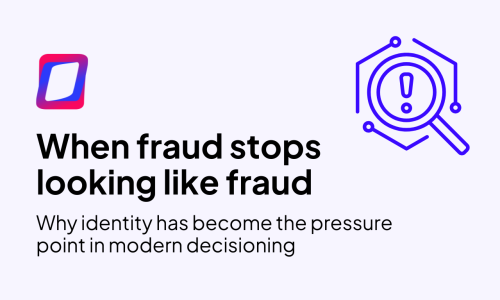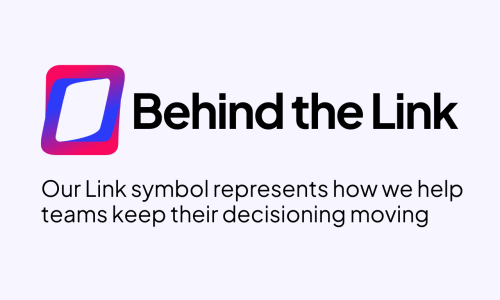Archaic Loan Originations Systems Credit Unions at Risk in Digital Lending
Imagine you’re Jamie—a loan officer at a credit union that prides itself on member service. But every day, you’re battling an outdated LOS. Approvals are slow, exceptions are constant, and any policy update means waiting on IT. Members are frustrated, and you’re watching good loans slip away.
Now picture this: your credit union partners with GDS Link.
Suddenly, Jamie spends less time on manual reviews and more time with members. Lending rules are flexible. Decisions are faster. The team has real-time insight to adjust and improve without the tech headaches.
This isn’t just Jamie’s story. It’s a reality more credit unions are waking up to as member expectations rise and competition heats up.
So, what path are you on? Still stuck in archaic systems or ready to embrace today’s tech capabilities?
How credit unions can keep up
Credit unions are at a turning point. A recent report from TruStage projects that credit union loan balances will grow by 5% in 2025, nearly double the growth from 2024, signaling both opportunity and urgency for modernizing lending strategies.
Credit unions have long been known for their member-first philosophy, personalized services, and community-centric approach. However, in 2025, these institutions face mounting pressure to modernize and adapt to a rapidly advancing lending industry. From the growing demand for home equity loans to the increasing competition from fintechs, credit unions must rethink their strategies. One critical element lies at the heart of this challenge: legacy loan origination systems (LOS).
Many credit unions still rely on outdated systems for loan processing, which is hindering their ability to respond to member needs quickly and efficiently. This is particularly concerning as technological advancements in data analytics, automation, and AI reform lenders’ assessment of risk, process applications, and deliver borrower experiences. Credit unions that fail to modernize risk falling behind. But working with credit risk management partners like GDS Link can help them keep up.
Cybersecurity among credit unions
As credit unions embrace digital banking, the risk of cyberattacks increases. From phishing to ransomware and identity theft, credit unions are increasingly vulnerable to breaches. According to the 2024 Ponemon Institute Cybersecurity Report, 60% of financial services organizations report a significant increase in cyberattack frequency, with phishing remaining the top threat. The risk of breaches is compounded by growing regulatory pressure on data privacy and anti-money laundering (AML) compliance.
To address these challenges, credit unions must ramp up their cybersecurity measures, including AI-driven fraud detection, real-time threat monitoring, and encryption technology. Many credit unions can benefit from shared infrastructure to lower costs while accessing state-of-the-art cybersecurity tools.
Home equity lending: where credit unions can stand out
As mortgage rates remain high, home equity loans (HELOCs) are expected to become increasingly popular. According to TransUnion, home equity lending is expected to grow by 13% in 2025 as homeowners turn to these products as a more affordable alternative to refinancing. However, many credit unions still treat home equity lending as a traditional mortgage process, which leads to slower approvals and higher operational costs.
Adopting automation for title verification and utilizing risk-based pricing models will reduce loan cycle times and lower costs. By implementing these updates, credit unions can better compete with larger financial institutions and meet the increasing demand for home equity loans.
Credit unions must leverage AI and automation
AI and automation are no longer optional in modern lending. Institutions that have embraced AI-driven underwriting are already seeing a payoff, with some reporting 25% improvement in loan approval times. On the flip side, those still stuck in manual workflows or legacy systems are falling behind as competitors adopt advanced technologies like AI-powered underwriting, risk modeling, and workflow automation.
Integrating this technology into an LOS can streamline key processes: automating credit risk assessment, improving decision speed, and reducing human error.AI also enables the ability to analyze large volumes of member data, making it easier to deliver personalized loan offers and smarter product recommendations. With automation doing the heavy lifting, teams can focus more on strategy and members get a faster, more seamless lending experience.
Embedded finance: a game-changer for credit union growth
Embedded finance is a key trend for credit unions to look out for in 2025. Consumers increasingly expect to receive instant credit when making purchases, and non-financial institutions like fintechs are offering this at the point of need. According to Accenture, embedded finance could account for up to $7 trillion in revenue by 2030, indicating a major opportunity for credit unions to capitalize on this shift.
By integrating lending services directly into non-financial platforms through APIs, credit unions can offer personalized loans during the buying process, allowing them to meet consumers’ credit needs. This requires an overhaul of digital infrastructure, but the investment can pay off by significantly expanding the credit union’s reach and lending volume. Embedded finance is the secret ingredient to having an advantage over credit union competitors.
Diversification of loan portfolios
With the traditional mortgage market slowing, many lenders are shifting focus to diversify their loan portfolios. According to TruStage, home equity and auto loans are expected to grow significantly in 2025,with auto loans growing by as much as 8% over the next year. Expanding into products like personal loans, auto financing, and home equity lines can help reduce exposure to market shifts while opening new revenue opportunities.
But diversification alone isn’t enough. Managing these products effectively requires advanced data analytics and real-time decisioning tools to accurately assess creditworthiness and fine-tune loan structures. The result? More flexibility for borrowers, more stability for the institution.
The borrower-centric approach: personalizing lending
Today’s borrowers expect a fast, digital-first lending experience, but they still value the human touch. According to FIS Global, 69% of consumers prefer personalized banking services. Lenders that can combine digital efficiency with personalized service will have a clear advantage in 2025.
AI and data analytics make that possible by enabling tailored loan offers based on individual financial histories and behaviors. Automation handles the straightforward applications, freeing up loan officers to focus on complex cases were advice and connection matter most.
At the end of the day, borrowers want to feel seen. They’re not just credit scores—they’re individuals with goals and circumstances. Automation can handle straightforward loans, while loan officers can focus on providing personalized advice for more complex cases. This approach improves their experience builds trust, improves satisfaction, and drives stronger long-term relationships.
Which path are you choosing? Archaic LOSs or new tech?
There’s no doubt that credit unions are at a crossroads. Stick with an outdated LOS, or step into the future with AI, automation, and embedded finance? The choice is clear, but not everyone’s moving fast enough.
In 2025, the pressure is mounting. Borrowers expect speed, personalization, and digital ease. Falling behind means more than just clunky workflows; it risks losing member trust and market share. But with the right tools, it’s possible to deliver faster decisions, smarter risk assessments, and the personalized service that once set community-based institutions apart.
The ones leaning in, adopting modern tech, streamlining processes, and rethinking what lending can look like aren’t just keeping up. They’re leading.
So, the question isn’t whether change is needed. It’s whether you’re ready to act.
Recent articles

When Fraud Stops Looking Like Fraud
Read article
Behind the Link
Read article
